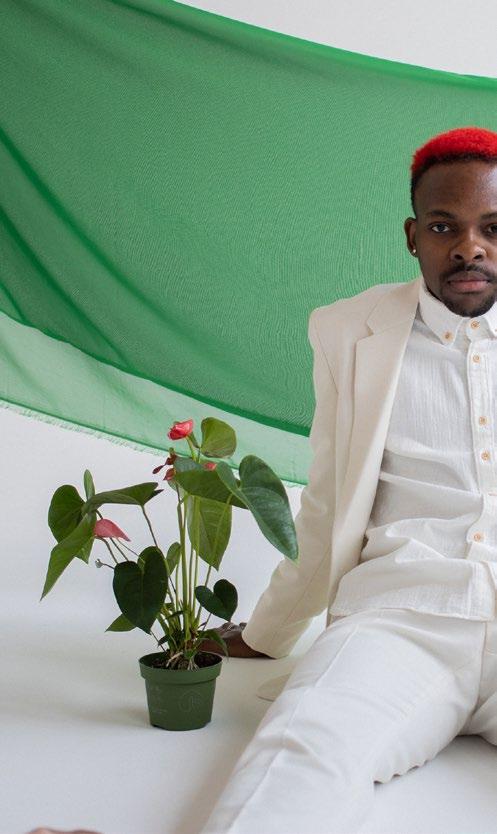
2 minute read
The Fashion System
Clothing users in this scenario recognize the loss of meaning inherent in superfluous consumption and withdraw from the fashion marketplace. They share their prized garments, take up the craft of re-use, and invest in the long-term wear, care, and repair of clothes. A home upcycling movement emerges around this practice, and the fashion industry leaps to provide service-oriented and craft-focused businesses to support this movement. The fashion industry of 2020 has contracted significantly due to the dramatic decrease in demand for new things, brands quickly shifted their production capacity to service-oriented business intelligence. What retail remains is circular and experiential, with the acquisition of new products now a tertiary source of profits. Clothing users can purchase a “house party” package from a local business who provides a crafts person to demonstrate the latest upcycling or visible mending strategies and a catered assortment of locally-sourced treats. “Party goers” can enjoy cocktails, hors d’oeuvres, and community gossip while learning a new way to reinvent a long-loved garment. Others host redesign or recycling parties in their home where new garment styles or even new materials are created in small batches. Re-wear or “who’s styled it best?” competitions and re-styling workshops have become entertaining activities in which social interaction is a central feature. Clothing has become a reason to connect with one another.
Garments are designed for multi-function and to withstand many lives. Clothing is (re)sourced in diverse ways. High-quality and bespoke garments are created with reused and recycled materials. Crafted with unique fiber mixes and redesign strategies, these garments are created to allow the user to make them their own over time, supporting a long life in one person’s wardrobe. Rooted in stories, clothes and the materials used to make them are reflective of their geographic and cultural origins, including who made or donned them and how they were once worn. Brands become “material raconteurs,” labeling clothes with clues about the garment’s origins.
Advertisement



But material considerations of a garment are only a beginning. Fit technology evolves to offer clothing users ways to modify and customize garments to improve the wearer’s experience in their own body. Garment satisfaction extends beyond functional quality to also include the extent to which it becomes a natural second skin, a reflection of both mind and body. Made via short, local, and highly transparent supply chains, clothes accurately reflect the social and environmental costs of production. These unique, high-quality collections of innovative, locally-sourced recycled and reused materials that are built to withstand iterations of recycling and generations of reuse. It is not uncommon for brands to offer life-time warranties or repair services with the cost of a new garment.
Clothing users expect to do more socializing and co-creating than buying at local stores that offer engaging creative services. One may visit with a personal “re-stylist” to reinvent their capsule wardrobe. A “repairologist” may be used to strategize the long wear of a beloved garment. A “fiber concierge” may be hired to connect the customer to designer artisans and recycled fiber manufacturers to create one-ofa-kind wardrobe investments. The need for frequent purchases and even rental is less prevalent today since no one would ever wear a garment only once. Most importantly, the clothing user in this scenario is far more conscious of a garment’s reflection not only of a contrived identity outside the body but how the garment integrates into their lived experience and confidence in one’s body, which is fundamental to life satisfaction.









